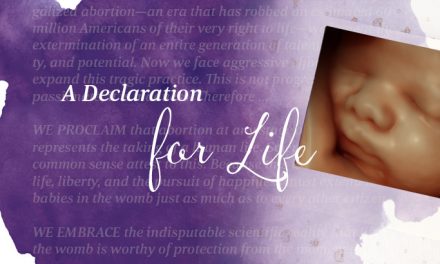For the media, sometimes it’s difficult to tell. It often all depends on how the reporters want to spin the story. If a child is “wanted” it is a baby, but for a woman having an abortion the preborn is often merely referred to as a fetus. One is a baby, and the other is not.
It is the magic of the spin—it is also confusing and hypocritical.
The recent tragic story from Indiana demonstrates this hypocrisy perfectly. Breana Rouhselang was a young high school cheerleader who was six-months pregnant when she was murdered by the father of her unborn child, Aaron Trejo. According to police, his reasoning was she had waited too long to tell him she was pregnant and she was past Indiana’s abortion time limit. In his mind, the only viable option for ending the pregnancy was to murder Breana and by extension her unborn baby.
“I took action…I took her life,” Trejo told police.
Trejo tried to explain to police that neither he nor Breana wanted the child, in a vain attempt to somehow justify his actions. At this time, it’s unknown if Breana was interested in keeping her child or making an adoption plan. Instead of examining all the options available to them, Trejo took matters into his own hands.
It is a horrific crime. One that is reminiscent of another Christmas tragedy that occurred sixteen years ago.
In December 2002, Laci Peterson disappeared from her Modesto, CA home. She was about eight months pregnant with her first child, a son that she and her husband Scott were going to name Conner. Several months later, the bodies of Laci and Conner were found in the San Francisco Bay, her husband Scott charged with their murders.
The media frenzy over the story consumed the news for months, and it was one of the biggest murder trials of the early 2000s, especially after the media got wind of Scott’s affair with a young single mother. The media narrative was salacious: An expectant father unwilling to take on the responsibility of a child cheats on his pregnant wife and then murders her and their child in order to reclaim his single life.
These tragic stories share a common thread, beyond that of young mothers who lost their lives to men who wanted to avoid the responsibility of a child. The unborn babies in these stories are both identified, one by name, and acknowledged as children who were murdered. It is significant because this almost never happens in the mainstream media.
Over the last several decades, the media has been content to push a pro-abortion narrative, which proclaims the power of a woman’s choice to decide when she becomes a mother. This means that most preborn or unborn children, typically called fetuses in media reports, magically become babies only when they are considered as “wanted” by their parents. The loss of baby Conner and the unborn child of Breana only matter and are acknowledged in the context of their mothers’ tragic deaths. If the situation had been different and their mothers had instead aborted those same children because of their cheating or unsupportive partners, they would’ve been celebrated.
It’s an incredibly hypocritical perspective. The reality is that the media cannot have it both ways. Either an unborn baby is a baby or it is not. The situation of the woman should not dictate how the life of the unborn child is perceived and reported, but that’s what has happened.
This inconsistency needs to end, because if the perceived negative circumstances of a person’s life defines their worth then those perceived as living in less than ideal situations, like those with disabilities or the elderly, are devalued. It could then become acceptable to eliminate the lives of those considered unwanted. History is full of examples of what can happen when the value of life is determined by arbitrary factors instead of by each human’s inherent worth.
The media, more than almost anyone, know that the words used to describe something matter. If a child is a “fetus” then it becomes something less than what it is, human. This self-imposed delusion usually ends when tragedy strikes and the media acknowledge what has always been true—that a baby is a baby, no matter how small.






